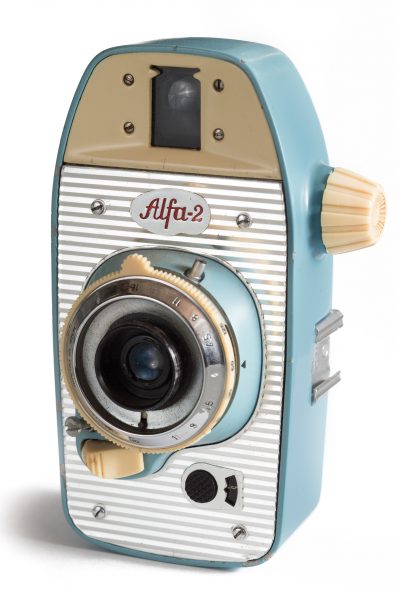Widelux F6
A panoramic camera from the 1950s remains in demand.
In 1958, the small Japanese manufacturer Panon Camera Shoko released an unusual oblong camera with a swing-lens turret and no shutter. Instead, the lens panned horizontally, exposing the film through a slit in the camera body.
The Widelux’s panoramic images cover 140 degrees of horizontal field, allowing a photographer to capture a full environment without substantial distortion. Its rectilinear lens means that objects are recorded with equal proportion, and straight lines appear straight, although the edges of the picture are stretched.
Only 20,000 units were made over the 40 years the Widelux was in production—Panon eventually went out of business in the early 2000s after suffering a fire—but the camera counts a number of vocal devotees. Stanley Kubrick favoured it, as did NASA, which sent a heavily modified Widelux F into space with Gemini 10 in 1966. But its most famous fan is the actor Jeff Bridges, who has used it to document the set of every film he has worked on since 1984— from Starman to Tron, The Big Lebowski, Crazy Heart, True Grit and Iron Man. (In 2003, he published a collection of photographs as the book Pictures.)
Bridges came across the camera in high school, when a photographer arrived with one to take a class photo. After an explanation of how it worked—including the fact that an exposure can take two-and-a-half seconds—some of Bridges’ classmates realised they could be in the picture twice if they raced the panning lens to the other side of the frame. Years later, Bridges made photographs where co-stars such as Matt Damon and Maggie Gyllenhaal appear twice in a single image with different expressions—having dashed to the other side of the picture.
The Widelux can be capricious. The viewfinder only shows around two-thirds of the vertical view, and most of the right side of the frame is blocked by the lens aperture. It doesn’t work with flash. Over time, dirt in the gears causes thick vertical bands of dark and light across the picture; so can fluorescent lights, due to their pulsation.
But Bridges says that he likes the Widelux because it’s close to how the human eye actually sees—as well as the aspect ratio of the average movie. “Because of its panning lens, it functions as sort of a bridge between still photography and moving pictures,” he wrote in the forward to his book.
The Widelux’s long exposures seem to slur time, added Bridges. “There was so much information in the picture—so much to look at. It’s almost as if the camera has peripheral vision—registering multiple stories within a single frame.”
See many of Jeff Bridges’ behind-the-scenes images at jeffbridges.com











